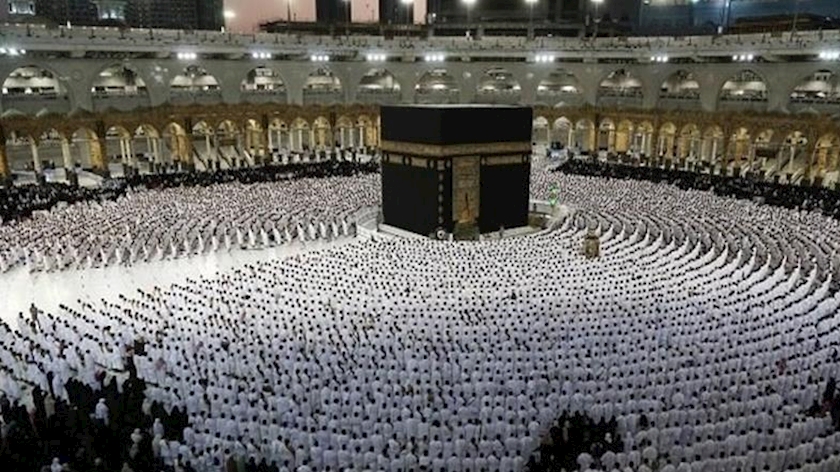Iran Press/ Hajj Pilgrimage: In Ayahs 27, 28, and 29 of Hajj Surah in the Holy Quran, God Almighty, commanded Prophet Abraham and his first son, Prophet Ishmael (PBUH), to rebuild the Sacred place of Kaba.
The place in that time was lying in ruins since the great deluge of the days of Prophet Noah (PBUH), who told the Iconoclast Patriarch to issue a public call in the wilderness of the then Mecca for the performance of the Hajj pilgrimage.
The roles of Prophetes in building Kaaba"
And proclaim the Hajj to the people: They shall come to you on foot and lean camels coming from distant places" That they may witness the benefits for them, and mention Allah's Name during the known days over the livestock. He has provided them. So eat thereof, and feed the needy."
Read More and Watch Video
Abrahamic Hajj; Where is sacred Ka'ba?"
Then let them do away with their untidiness, fulfill their vows, and go around the Ancient House."
Read More:
Abrahamic Hajj; Guests of Merciful Lord
Hajj refers to the intention of visiting a place. The HolyQur'ann transfers the meaning of Hajj from its general linguistic meaning to a specific purpose which denotes the annual pilgrimage to the Holy Kaaba in Mecca as one of the religious duties of Islam.
Read More:
Hajj; a symbol of monotheism and cause of spiritual cohesion among Muslims
The tremendous annual gathering is called Hajj, a collection of rites and ceremonies performed by Muslims in a specific place and during a particular time set by Islam.

The Hajj begins with the donning of the Ihram or the pilgrim's white seamless garb at a place called "Miqaat."
When the pilgrims enter masjid Al-Ahram or the Sacred House that encloses the Kaaba, they perform the the''Tawaf'' or the 7-round circumambulation of the symbolic House of God.
Then the'Sa'iy'' or walking briskly seven times between the hillocks of Saf'' and ''Marwa'' is done, in memory of the quest for the water of Haja'' for the thirsty prophets Ishmael for whom God made the spring of "Zamzam'' gush from the depths of the earth.
In ayah 158 of Surah Baqara, Quran says: "Indeed Safa and Marwah are amongAllah'ss sacraments. So whoever makes Hajj to the House, or performs the Umra'', there is no sin upon him to the circuit between them"
Then follows the ''Wuquf'' or remaining in certain places during Hajj, such as the plain of''Araf'' on the 9th of Zilhijja till sunset, the nightlong stay at '' Muzdalef '' or "Mash'arr al-Haram'', where the pilgrim gathers pebbles for the ''Rami al-Jamarat'' or stoning of the symbolic Satans at ''Mena''.
Read More: Unity and resistance: Message of Hajj
This act commemorates the spurning of Iblis or Lucifer, who appeared three times in Mena in a vain bid to dissuade Abraham, his wife Hajar, and his son Ishmael from carrying out God's commandments.
Today, this stoning ritual symbolizes the Muslim's rejection of not just satanic temptations but the mischief of the enemies of humanity.
On the 10th of Zilhijja at Mena, the sacrifice of a sheep, cattle, or a camel, is performed as a thanksgiving toGod'ss the miraculous substitution of a ram in place of Ishmael, just as Abraham's knife was about to slit the throat of his teenage son, as " Divine Providence" had ordered as a test of faith.
The 10th of Zilhijja is also the day of " Eid al-Adha". On this day in Mena, the male pilgrims must shave their heads.
Read More: Iranians celebrate Eid al-Adha
On the 11th and 12th of Zilhijja, the pilgrims stay in Mena but make trips to Mecca to perform the Tawaf or the 7-round circumambulation around the Ka'ba, followed by a two-Rakat ritual prayer. Finally, the Tawaf An-Nisa is committed to completing the Hajj pilgrimage.
These rituals grant dignity to Muslims and firmly bind them with the Loving Creator.
205
Hossein Vaez

